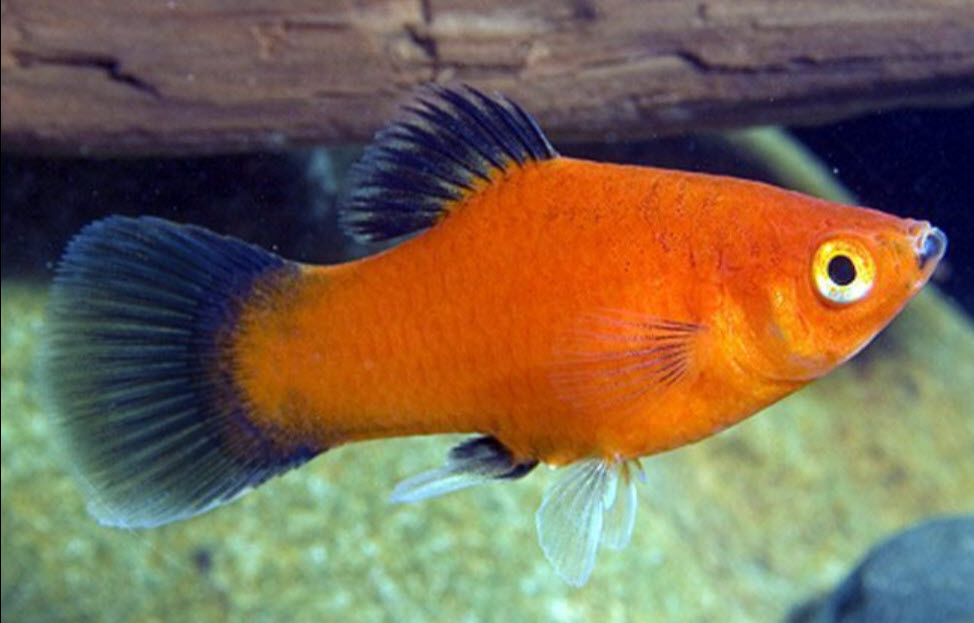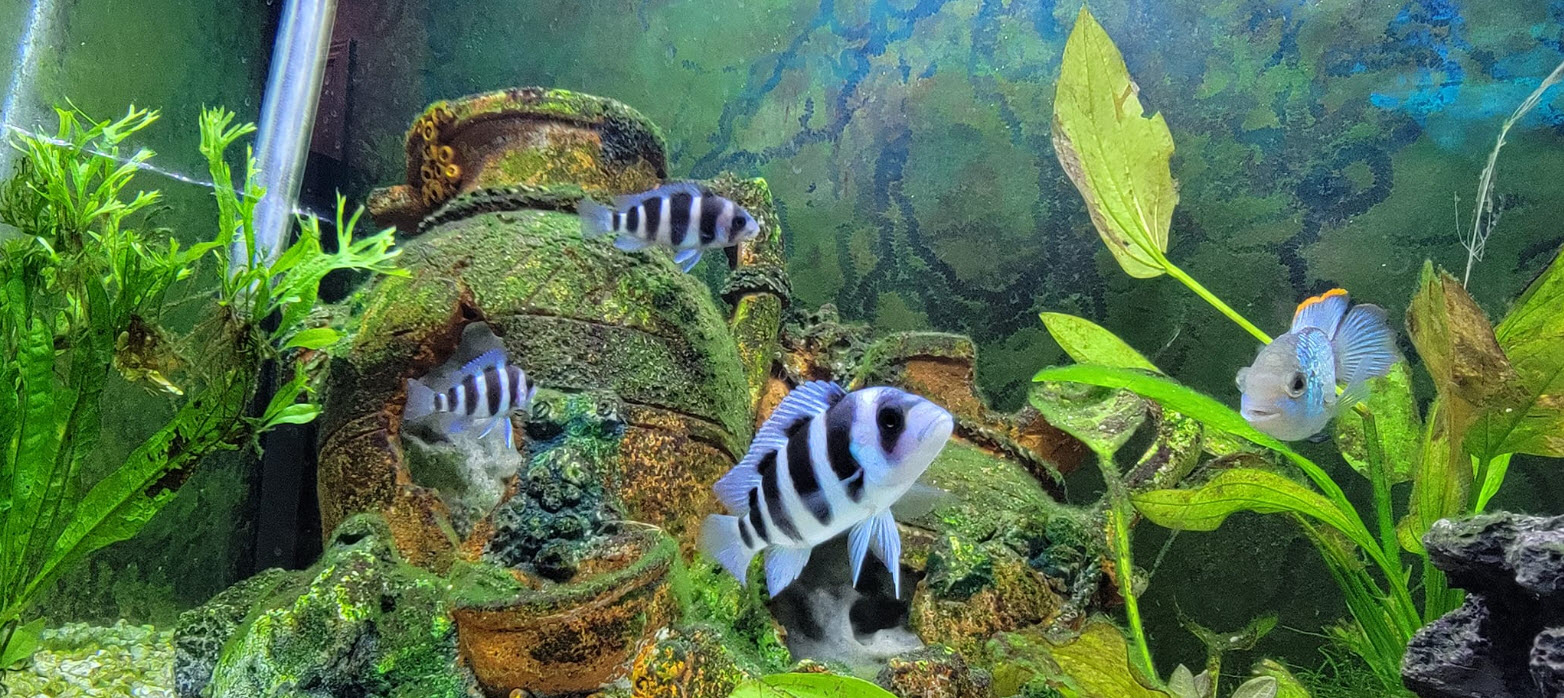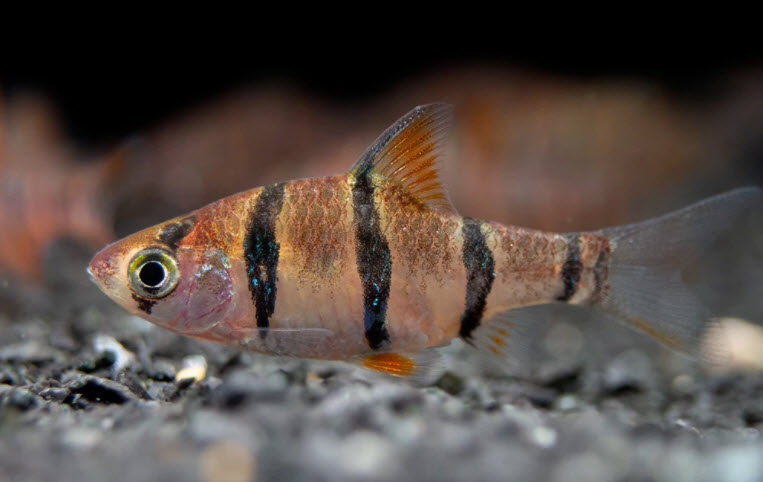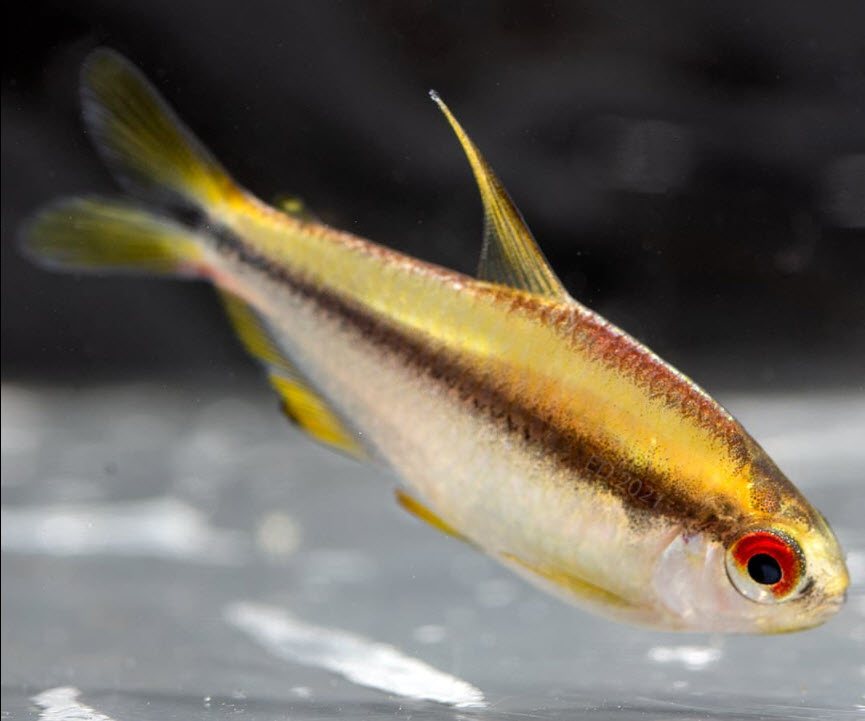
If you are a newcomer to the hobby just accept the fact that brown algae will form in the aquarium and just leave it be in the aquarium. Do NOT try and fight the brown algae. It is a war the algae will win.

Brown Algae in More Depth
Newcomers to the hobby who set up their tanks are distraught when their expensive white aquarium decorations start to turn brown after a few weeks in the aquarium. They try to keep this “brown algae” controlled. This is a war the algae will win. And, since this “brown algae” is very good for ALL fish, it is beneficial to an aquarium for the algae to win this war.
A newcomer to the hobby should just accept the “brown algae”. It will grow very heavily for four months or so. Then it will begin to become thinner and less obvious. But there will always be some “brown algae”. Many unseen small organisms will populate this “brown algae” and fish will eat these organisms and browse the algae. The algae will become an important component in a “mature” healthy aquarium ecosystem.
It is best to have gravel, plants, and decorations which make the brown algae just look like part of the natural look of the aquarium. Pure white Buddas might be a very attractive decoration but they will soon have brown on them. Unless you want to pull all your decorations out every two weeks and treat them with bleach, either accept the brown or switch to decorations that will blend in if they have brown and green algae on them. The broken urns below are just such a set of decorations.

Brown Algae Biology
The term “Brown Algae” is somewhat of a misnomer. In the hobby, a brown film in the aquarium is commonly called “brown algae” or “diatoms”. If you examine most “brown algae” (other names are “periphyton” or “aufwuchs”) under a microscope you will find it is very roughly about 50% porous detritus and cellulosic “slime” (thus the “slimy” feel) and 50% a mixture of diatoms, other algae, cyanobacteria, bacteria, water molds, flagellates, ciliates, and many other microscopic critters.
The exact mix is highly variable and dependent on things like light and nutrients. For instance, with moderate light and high silicate in the water, diatoms will predominate, but with low silicate and high phosphates, red algae might predominate. Where there is little light bacteria will predominate. It happens on all surfaces in virtually all aquariums and is just part of Mother Nature. It will appear even with no light.

This “brown algae” typically grows rampant for the first few months of an aquarium’s existence. Initially, the brown film consists of only relatively nutrient-poor species that fish won’t “graze”. As the film matures it develops a more nutrient-rich species profile (“periphyton”) and many fish will graze on it and control it to some degree. Thus, it is common for a “brown algae problem” to become more manageable with time in an aquarium.
Stopping brown algae films from forming on aquarium decorations requires bleaching them every few weeks. If you want to do huge amounts of work and cleaning, you can take on the task of keeping aquarium substrate and decorations clean of brown algae. Most people just don’t have the time to do that.
Snails and suckermouth fish can also control brown algae to some degree. And a properly planted aquarium will have little brown algae after it becomes settled (typically six months or more).

Here is a link to an article on controlling algae:
16.2. Controlling Algae
Here is a link to all algae problems in depth:
16. Algae
.
Return to Guidelines for Beginners Menu
.
Aquarium Science Website
The chapters shown below or on the right side in maroon lead to close to 400 articles on all aspects of keeping a freshwater aquarium. These articles have NO links to profit-making sites and are thus unbiased in their recommendations, unlike all the for-profit sites you will find with Google. Bookmark and browse!
.

Leave a Reply